Copyright 2017 by Seph Lawless All rights reserved. No part of this book may be reproduced in any manner without the express written consent of the publisher, except in the case of brief excerpts in critical reviews or articles. All inquiries should be addressed to Skyhorse Publishing, 307 West 36th Street, 11th Floor, New York, NY 10018. Skyhorse Publishing books may be purchased in bulk at special discounts for sales promotion, cor-porate gifts, fund-raising, or educational purposes. Special editions can also be created to specifications. For details, contact the Special Sales Department, Skyhorse Publishing, 307 West 36th Street, 11th Floor, New York, NY 10018 or .
Skyhorse and Skyhorse Publishing are registered trademarks of Skyhorse Publishing, Inc., a Delaware corporation. Visit our website at www.skyhorsepublishing.com. 10 9 8 7 6 5 4 3 2 1 Library of Congress Cataloging-in-Publication Data is available on file. Cover and interior photography by Seph Lawless ISBN: 978-1-5107-2335-1 eISBN: 978-1-5107-2338-2 Printed in China CONTENTS 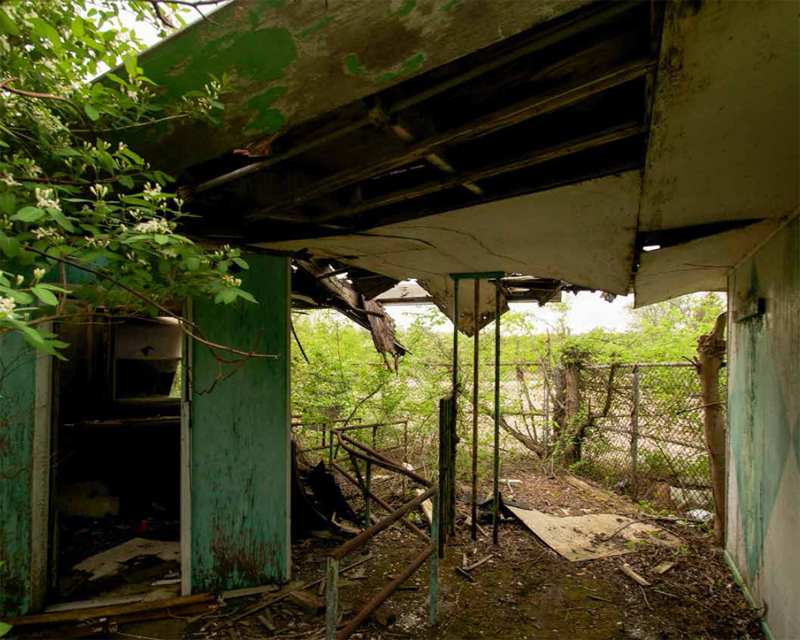 FOREWORD America is not a young land. William Burroughs once said that, and he was right. America has been here for a long time.
FOREWORD America is not a young land. William Burroughs once said that, and he was right. America has been here for a long time.
Not just the Natives who hunted mammoths across the land bridge. Im talking about you and me, the Americans born in the twentieth century who are still here in the twenty-first. Our America has been here long enough to leave ruins behind. Have you ever been to Detroit? You dont even have to go to all the way to Eight Mile to see abandoned spray-painted middle-class houses stuffed with garbage bags and cast-off Christmas trees intersected with inhabited homes that have shiny mini-vans in the driveway and fresh-faced kids staring at you through the window. America in decline. Seph Lawless, urban explorer and photographer extraordinaire, is intimately familiar with the America that we have left behind.
Maybe youve seen the ruins of our former selves, or maybe youve only seen it through his photos, but here they are. He started with the profoundly titled Autopsy of America , an exquisite book of photos of abandoned shopping malls. With artistic intuition and masterly technique, this Gonzo photographer penetrated places that we didnt even know were there. Lawless grew up going to his local shopping mall in Cleveland. Remember when we used to see shopping malls as permanent staples of American consumer culture? We took them for granted. Or, if you were an eighties metalhead like me, we rejected them as vacuous end-products of human evolution.
George Romero understood this when he used a shopping mall as the setting for his 1978 zombie apocalypse masterpiece, Dawn of the Dead . What are they doing here? says one survivor, while looking from the terrace of the Monroeville Mall in Pennsylvania choked with zonked-out zombies in disco-era shopping attire. Why do they come here? Some kind of instinct, says another survivor in SWAT gear. Memory of what they used to do. This was an important place in their lives.  Lawless conveys in his photos not just an invitation to a post-apocalyptic place we havent been to, but a window into a place we used to go and left behind.
Lawless conveys in his photos not just an invitation to a post-apocalyptic place we havent been to, but a window into a place we used to go and left behind.
And we didnt know, when we walked away, that it would ever turn into America in decline. Which bring us to Lawlesss next book. Whats the subject this time? Abandoned amusement parks fallen into ruins, leaving behind the skeletons of roller coasters and grinning clowns perched on giant tea cups in the middle of the forest. As a former barker, vendor, and roustabout for Ringling Brothers and the Big Apple Circus, I find this fascinating. I met Lawless while I was reporting for CNNMoney and working on my own book, Circus Jerks . I must say, he beat me at my own game.
Where does he find these weed-choked wonder rides in the middle of nowhere? Thats his talent. Of all the phantasmagoric freak house bizarrities that Lawless captured with his camera, my personal favorite is the Land of Oz. As an Appalachian Trail thru-hiker, I spent a lot of time wandering the hills of North Carolina. But never did I ever stumble across a sunset-dappled hilltop with a meandering yellow brick road bordered by goblin-faced trees that looked like they could pick something off of you, as that angry tree said to Dorothy when, you know, she picked his apple. I would like to go to that place. But is it still there? Well have to ask Seph Lawless.
Only he knows where to find these abandoned bits of Americana. And they are fleeting. Aaron Smith
CNN Journalist
February 2017  SIX FLAGS AMUSEMENT PARK NEW ORLEANS, LOUISIANA 20032005 Six Flags in New Orleans, formerly known as Jazzland, unfortunately operated for only a few years before a life-changing event that sent shockwaves across a nation and devastated the landscape of New Orleans forever, a catastrophic hurricane named Katrina. I first entered New Orleans in 2015 after being hired by the Guardian newspaper to document the tenth anniversary of Hurricane Katrina. I worked alongside the original FEMA responders for that project and met many survivors of that horrific storm. I was hired to document the hardest-hit areas of New Orleans, which was the Lower Ninth Ward.
SIX FLAGS AMUSEMENT PARK NEW ORLEANS, LOUISIANA 20032005 Six Flags in New Orleans, formerly known as Jazzland, unfortunately operated for only a few years before a life-changing event that sent shockwaves across a nation and devastated the landscape of New Orleans forever, a catastrophic hurricane named Katrina. I first entered New Orleans in 2015 after being hired by the Guardian newspaper to document the tenth anniversary of Hurricane Katrina. I worked alongside the original FEMA responders for that project and met many survivors of that horrific storm. I was hired to document the hardest-hit areas of New Orleans, which was the Lower Ninth Ward.
I also thought documenting the abandoned Six Flags amusement park would be a dramatic way to further show the amount of devastation of the area, and it worked. My images of the abandoned park went viral and fueled the other images that I took of the Lower Ninth Ward, as it cast awareness on all that still needed to be done in New Orleans since the floodwaters of Hurricane Katrina ravaged the city. Perhaps at no other time in modern history has the US government been criticized so harshly at local, state, and even federal levels. The complete incompetence of the state and federal government to handle the storm before and during Hurricane Katrina reached enormous proportions, even compelling rap artist Kanye West to infamously lash out on a live television fundraising event that the current president at the time, George W. Bush, didnt care about black people. I realized my images of New Orleans and the abandoned Six Flags park would test Americas resilience once again by opening up old wounds, and my images did just that.
After the images went viral, I did several television news appearances where I talked about the issues still facing New Orleans a decade after most Americans had forgotten about it. 






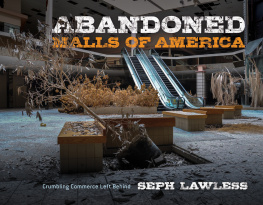

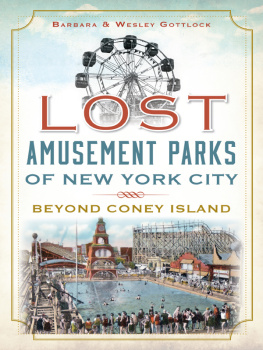
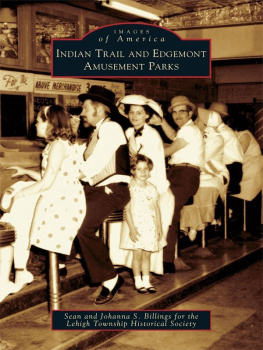

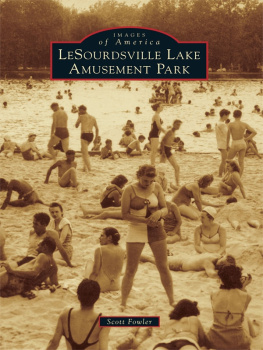
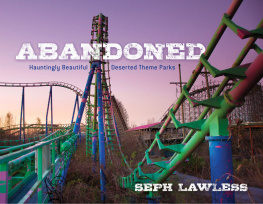
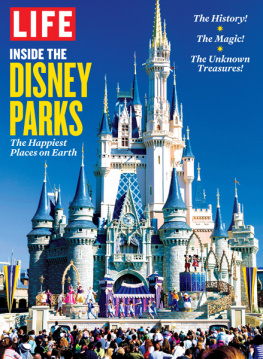



 FOREWORD America is not a young land. William Burroughs once said that, and he was right. America has been here for a long time.
FOREWORD America is not a young land. William Burroughs once said that, and he was right. America has been here for a long time. Lawless conveys in his photos not just an invitation to a post-apocalyptic place we havent been to, but a window into a place we used to go and left behind.
Lawless conveys in his photos not just an invitation to a post-apocalyptic place we havent been to, but a window into a place we used to go and left behind. SIX FLAGS AMUSEMENT PARK NEW ORLEANS, LOUISIANA 20032005 Six Flags in New Orleans, formerly known as Jazzland, unfortunately operated for only a few years before a life-changing event that sent shockwaves across a nation and devastated the landscape of New Orleans forever, a catastrophic hurricane named Katrina. I first entered New Orleans in 2015 after being hired by the Guardian newspaper to document the tenth anniversary of Hurricane Katrina. I worked alongside the original FEMA responders for that project and met many survivors of that horrific storm. I was hired to document the hardest-hit areas of New Orleans, which was the Lower Ninth Ward.
SIX FLAGS AMUSEMENT PARK NEW ORLEANS, LOUISIANA 20032005 Six Flags in New Orleans, formerly known as Jazzland, unfortunately operated for only a few years before a life-changing event that sent shockwaves across a nation and devastated the landscape of New Orleans forever, a catastrophic hurricane named Katrina. I first entered New Orleans in 2015 after being hired by the Guardian newspaper to document the tenth anniversary of Hurricane Katrina. I worked alongside the original FEMA responders for that project and met many survivors of that horrific storm. I was hired to document the hardest-hit areas of New Orleans, which was the Lower Ninth Ward.



